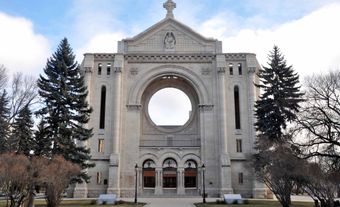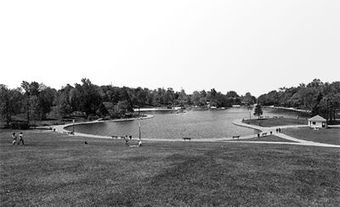Étienne-Joseph Gaboury, CM, OM, architect (born 24 April 1930 in Bruxelles, MB; died 14 October 2022 in Winnipeg). Gaboury's strong links to the prairie landscape and the Franco-Manitoban community of his youth are reflected in his architecture. His major projects include the Precious Blood Church, the Royal Canadian Mint in Winnipeg and Saint Boniface Cathedral.

Education and Early Career
Étienne-Joseph Gaboury was educated at St Boniface College, University of Manitoba (B Arch, 1958) and the École des beaux-arts, Paris (where the late work of Le Corbusier influenced him strongly). After apprenticing in Manitoba, Gaboury formed a partnership in Winnipeg with Denis Lussier and Frank Sigurdson, but since 1976 has been the singular principal.
Major Works
An important early building was the 1968 Precious Blood Church in St Boniface, a striking church notable for its double spiral of wooden beams reaching to an oculus. A major opportunity presented itself in rebuilding within the shell of the burnt St Boniface Cathedral by Jean-Omer Marchand, thus creating a Winnipeg parallel to the rehabilitation of Coventry Cathedral, bombed in England during the Second World War.
Gaboury has worked in a variety of other idioms, including the high-tech Royal Canadian Mint in Winnipeg (1978), the hybrid Canadian-Mexican regionalism of the Canadian Embassy in Mexico City (1982), and the urban infill of the Provincial Remand Centre (1992). The Nelson House School (1986), by virtue of its shape, is seen as an emblem of community. By nesting itself into a hill at the forest's edge, it truly responds to its northern location. Gaboury's designs are linked by a concern with landscape, texture and cultural identity, and by the manipulation and celebration of sunlight.
Honours and Awards
- Fellow, Royal Architectural Institute of Canada (1970)
- Member, Order of Canada (2010)
- Member, Order of Manitoba (2012)

 Share on Facebook
Share on Facebook Share on X
Share on X Share by Email
Share by Email Share on Google Classroom
Share on Google Classroom





